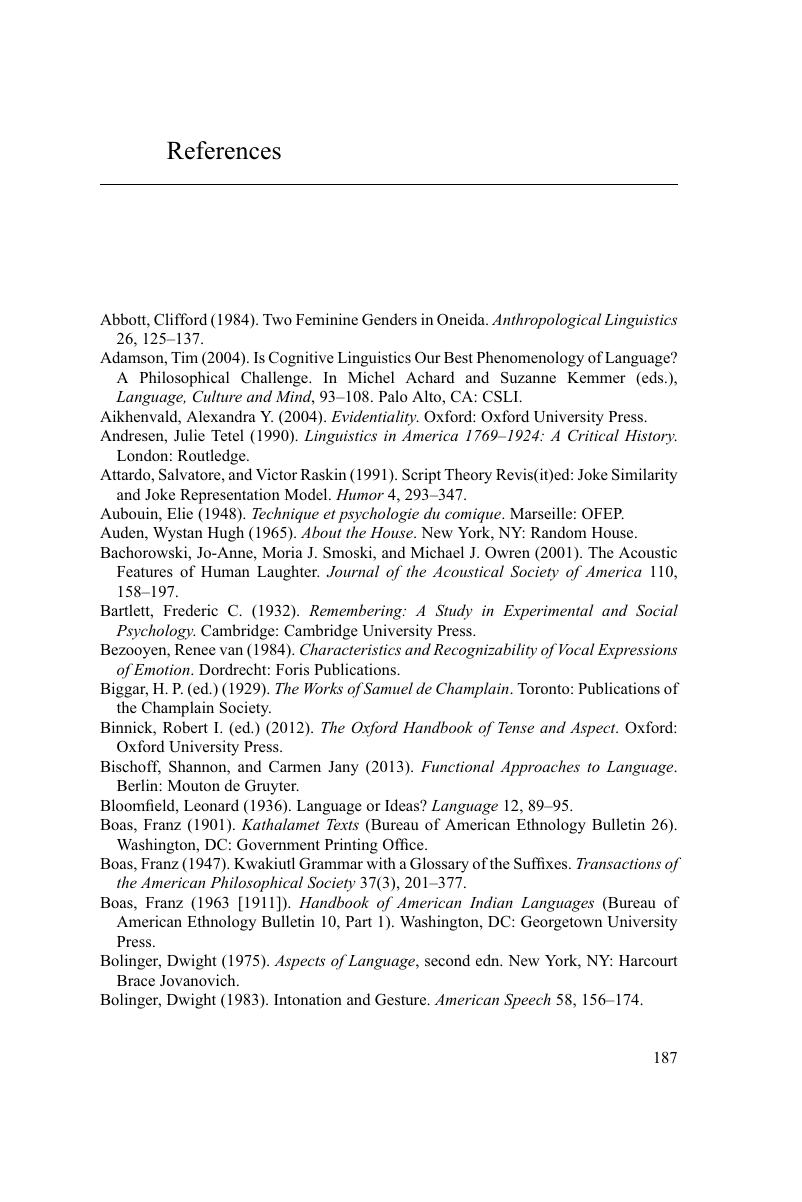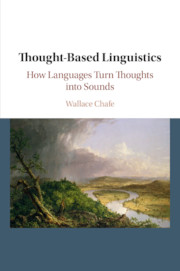Book contents
- Thought-Based Linguistics
- Thought-Based Linguistics
- Copyright page
- Epigraph
- Contents
- Acknowledgments
- Prologue
- Part I Preliminaries
- Part II Thoughts and Their Properties
- Part III Verbalization Illustrated
- Part IV Related Issues
- Part V Common Ways of Orienting Thoughts
- Part VI The Emotional Component of Thoughts
- Epilogue
- References
- Index
- References
References
Published online by Cambridge University Press: 13 April 2018
- Thought-Based Linguistics
- Thought-Based Linguistics
- Copyright page
- Epigraph
- Contents
- Acknowledgments
- Prologue
- Part I Preliminaries
- Part II Thoughts and Their Properties
- Part III Verbalization Illustrated
- Part IV Related Issues
- Part V Common Ways of Orienting Thoughts
- Part VI The Emotional Component of Thoughts
- Epilogue
- References
- Index
- References
Summary

- Type
- Chapter
- Information
- Thought-based LinguisticsHow Languages Turn Thoughts into Sounds, pp. 187 - 196Publisher: Cambridge University PressPrint publication year: 2018



